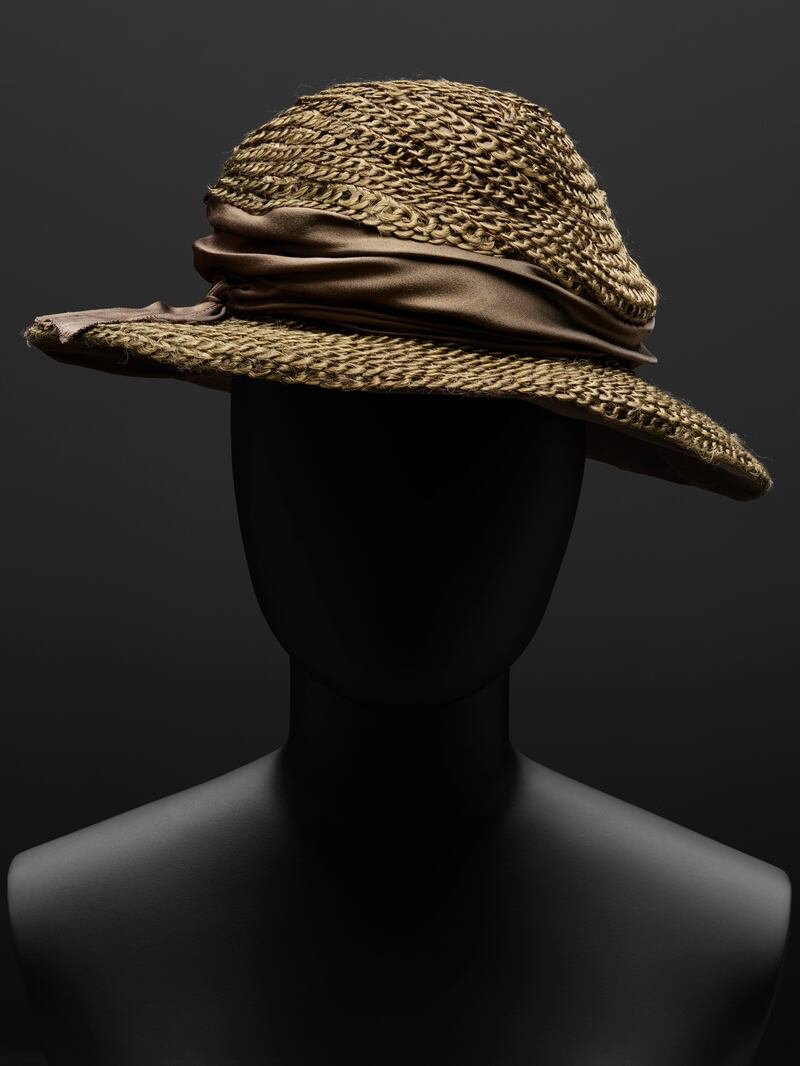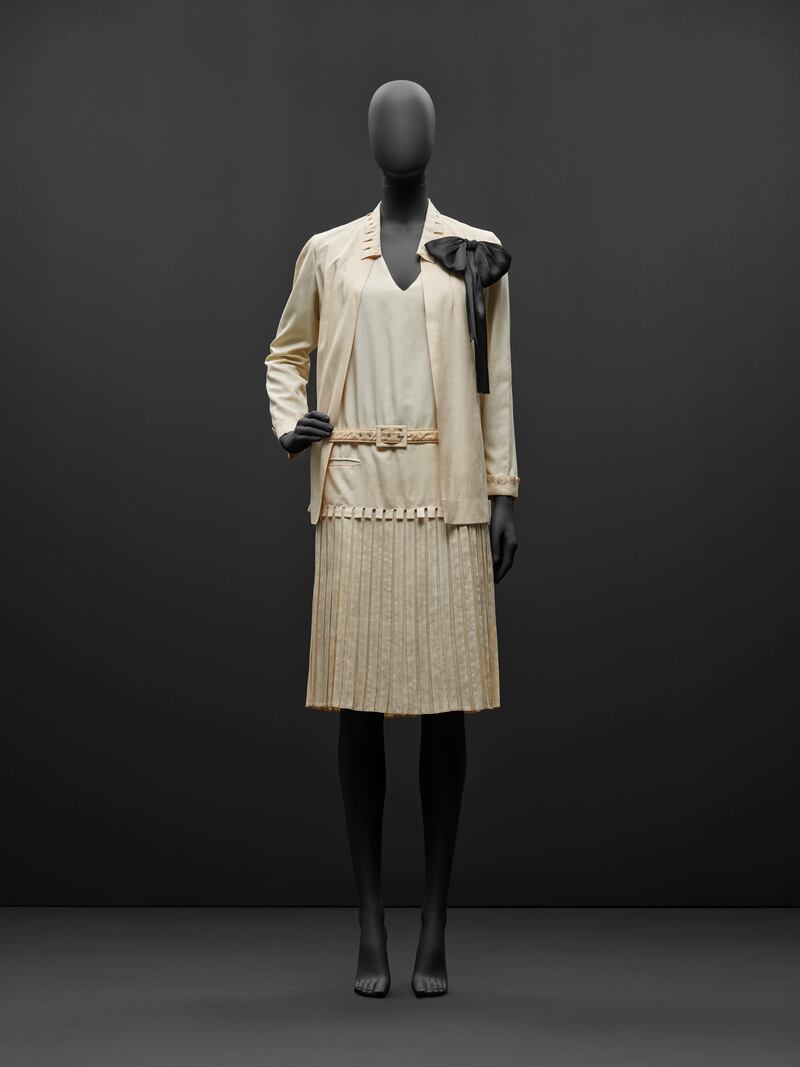Walking through the city of Westminster heading for the Gabrielle Chanel: Fashion Manifesto exhibition at the Victoria & Albert Museum in London recently, it was hard to ignore the interlocking gold CCs on street bollards identical to the instantly recognisable Chanel logo. It’s a reminder of the designer’s celebrated decade-long affair with Hugh Grosvenor, the Duke of Westminster, one of the world’s richest men in the 1920s. The entwined CCs are not a result of their affair as many have surmised, but more prosaically stand for City Council and were only installed in the 1950s long after their affair had dissipated.
The exhibition, the first in the UK dedicated to the French couturière Gabrielle “Coco” Chanel, charts the development of her style and establishment of the House of Chanel from her first millinery boutique in Paris in 1910 to the showing of her final collection in 1971. As to be expected from the V&A, it is a comprehensive and captivating exhibition to see the incredible beauty of some of her notable designs, which include many rarely seen pieces up close. It drives home her innovative approach to clothing and the fact that she designed first and foremost for herself.
Be prepared for crowds in the Sainsbury Gallery; on the day of my visit, one could hardly move in the throng, mostly women of all ages gazing agog at some of the highlights that include first and foremost at the entrance the fine gauge silk jersey blouse from 1916 that made her name, a fabric previously only used for underwear and stockings which she used for summer garments.
The exhibition is divided into 10 sections covering Gabrielle Chanel’s background and the beginning of her career, how her identifiable style developed, the creation of the fragrance No 5, her evening wear, the relaunch of her couture house after the war, a dramatic two-tier display of her famous suits, the importance of her accessories, her cocktail suits, costume jewellery and a finale of outfits displayed on a recreation of the famous staircase of her house on the Rue Cambon in Paris.
READ MORE



What stands out is her modernity, her elegance, her innovative approach to fabric, silhouette and construction. The early dresses designed for ease of movement and lightness are utterly feminine and romantic. The use of lace, particularly black Chantilly lace with tiered skirts and transparent-sleeved dresses and the use of decorative cutwork roses and pearls on simple georgette and chiffon dresses from 1919 remain fresh and alluring even today.
The play with materials is illustrated in a pale pink dress constructed in alternating lace and tulle zig-zag sections and in another in cotton velvet shaped to the contours of the body. She could draw from menswear in intriguing ways, as in a tennis suit with Peter Pan collar and white bib front like a man’s dress shirt, or a lightweight tweed suit shaped asymmetrically with a horizontal waist seam above the flapped patch pockets drawn from Norfolk hunting jackets, a study in clever tailoring. “Throughout her career,” notes curator Oriole Cullen, “Chanel was inspired by the simplicity and practicality of menswear and sporting clothes”.

Other memorable exhibits include one of her first hats from 1917 – she began as a milliner after all – made from looped braid and silk which is collapsible and portable – that practical touch. Another is the story behind the iconic two-tone slingback shoe in leather and silk satin. Chanel selected beige leather to match her own skin tone which gave the appearance of an elongated leg, and the small black toe cap visually shortened the foot and protected the pale leather from dirt. She later introduced three toecap options in brown, navy and for evening, gold. The reason the chain handle on the famous 2.5 Chanel bag launched in 1955 was interlaced with leather was to soften the rattle of the chains.

She also lined coats and jackets with the same material as the dress underneath, was prolific in her use of Linton tweed and a black suit in worsted wool crepe (bought at the auction of her garments after her death) with a detachable white roll collar and cuffs (that could be washed and replaced, another practical touch) remains a timeless ensemble, as relevant and wearable today as it was when first created more than 50 years ago. Black was a colour with which she became inextricably linked as in her famous “Ford” black dress of 1926.

Credited with popularising artificial pearls, she will also be remembered for her lasting impact on costume jewellery. The sleeker the fashion, the more abundant the decor and she often paired ropes of pearls with simple jersey daywear. Some of the most celebrated pieces were designed by Fulco di Verdura, the Sicilian aristocrat including the famous cuff bracelets studded with brightly coloured imitation gems. Cecil Beaton, who photographed Chanel many times, said she prized jewellery “as something decorative or amusing but never because it was expensive”. Her final collection after a career of more than 60 years was presented in January 1971, two weeks after her death in her suite at the Ritz aged 87.
The book Gabrielle Chanel, edited by Oriole Cullen and Connie Karol Burks with new photography by Nicholas Alan Cope published by the V & A, accompanies the exhibition which runs until February 25th, 2024. A revised and updated edition of Justine Picardie’s Coco Chanel: The Legend and the Life first published in 2010 and considered the definitive biography is published by Harper Collins.














